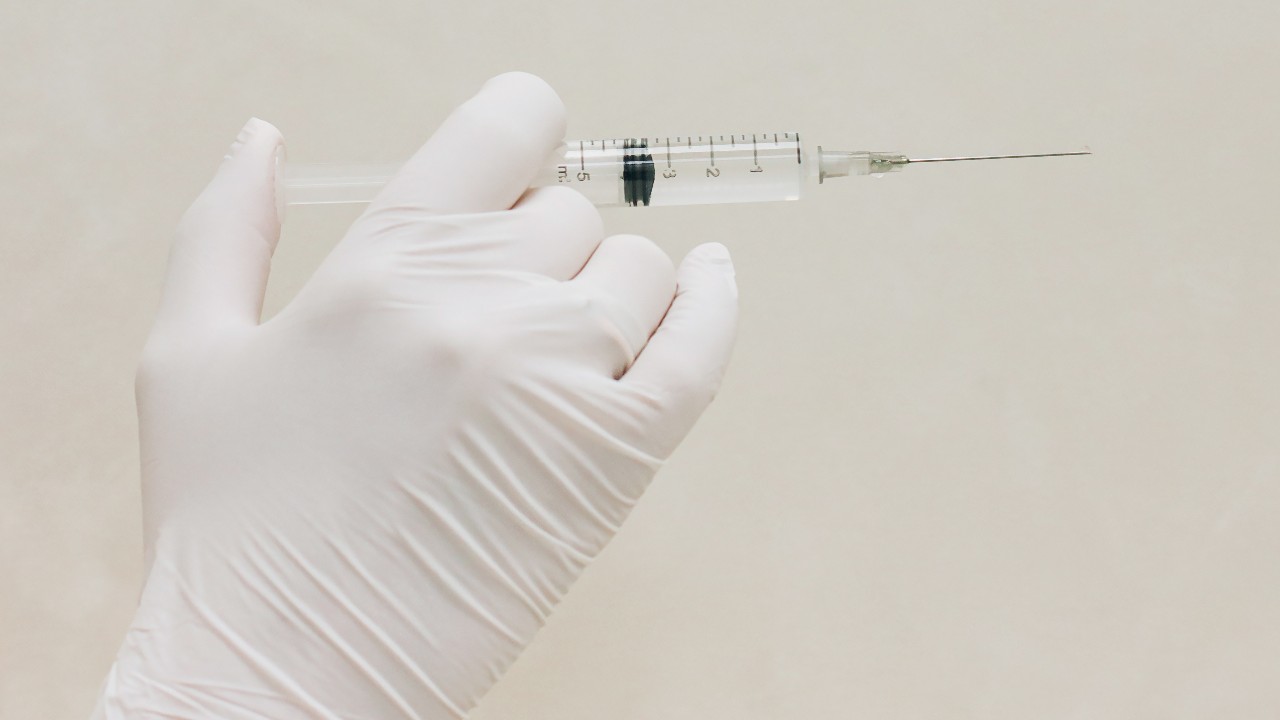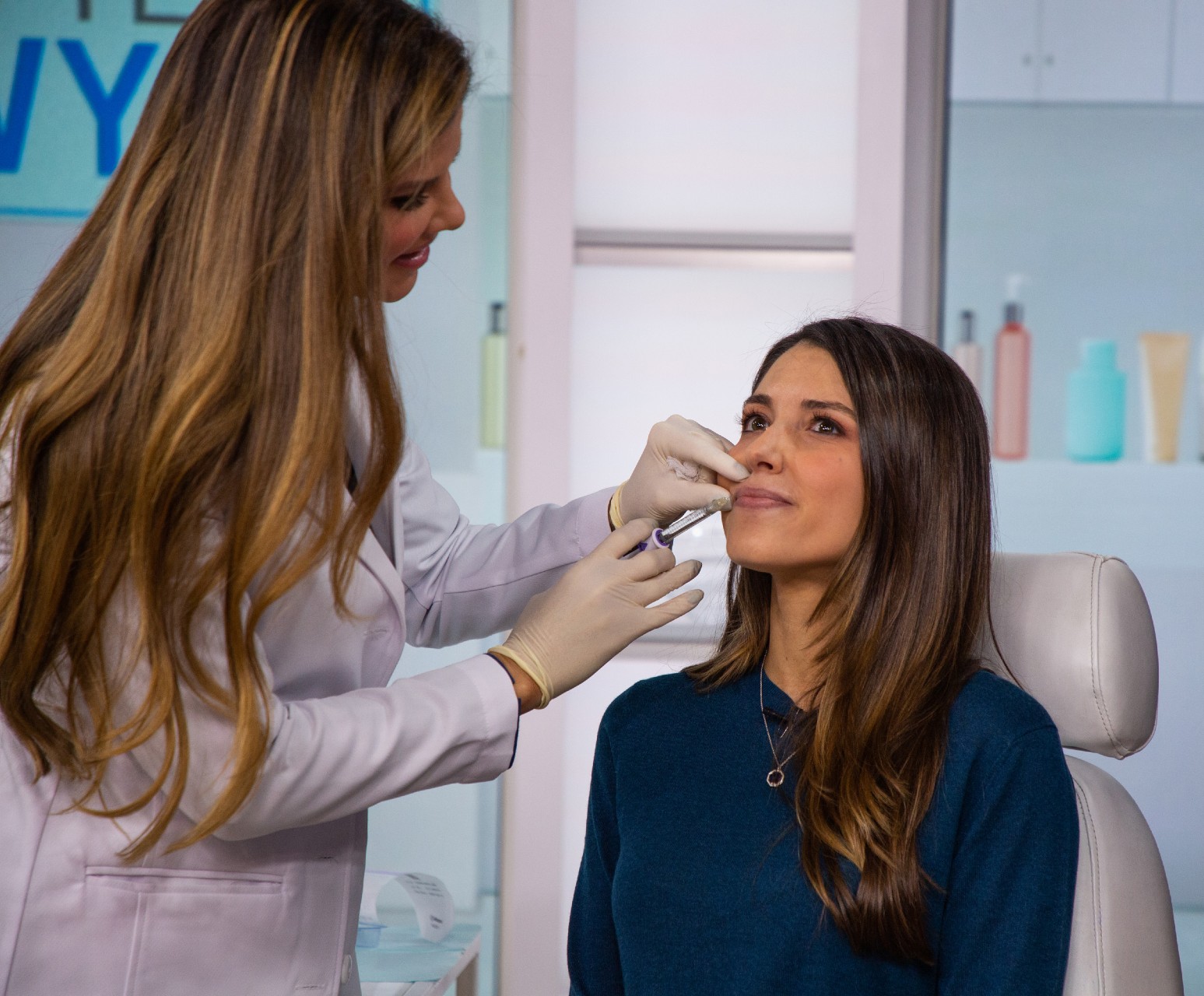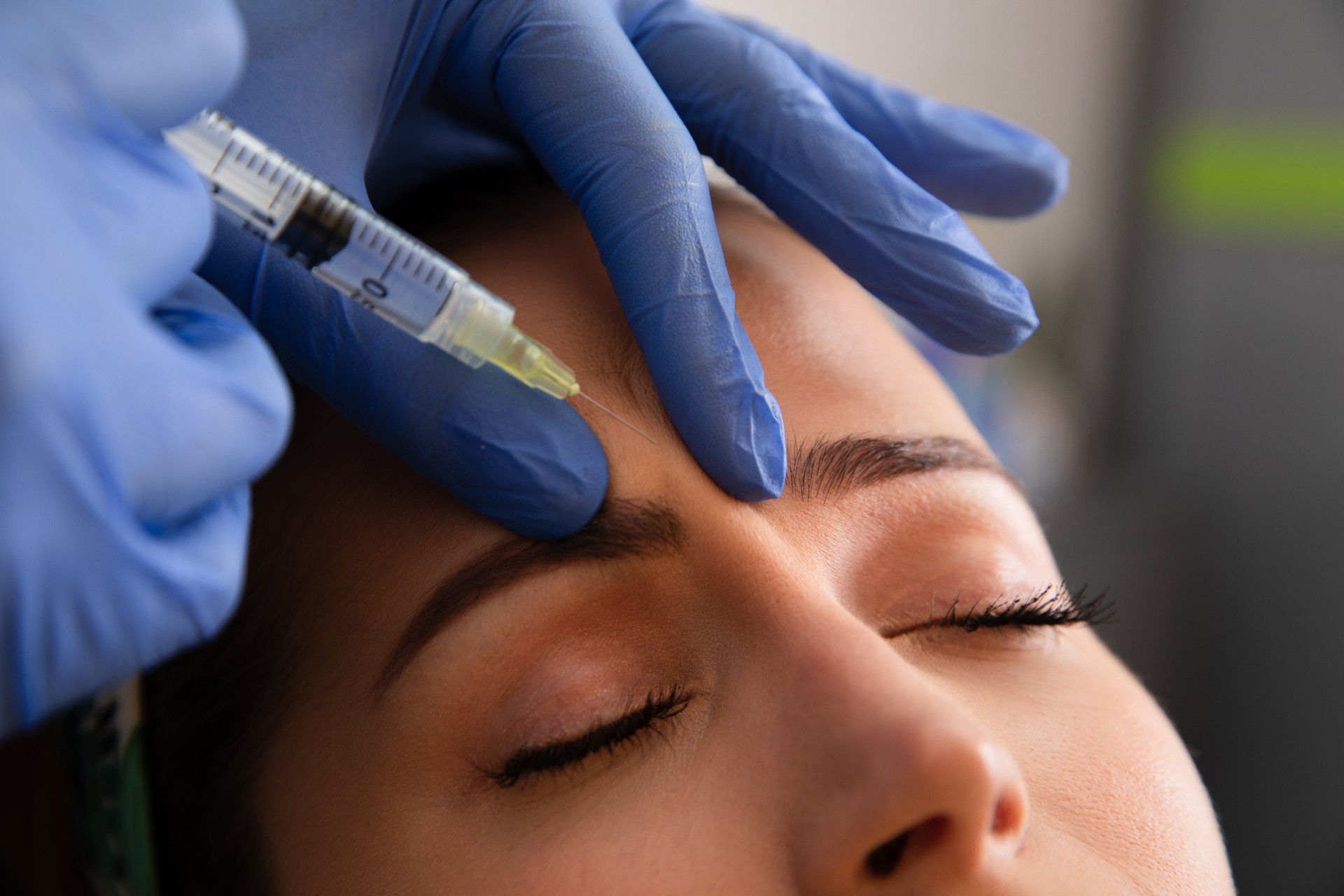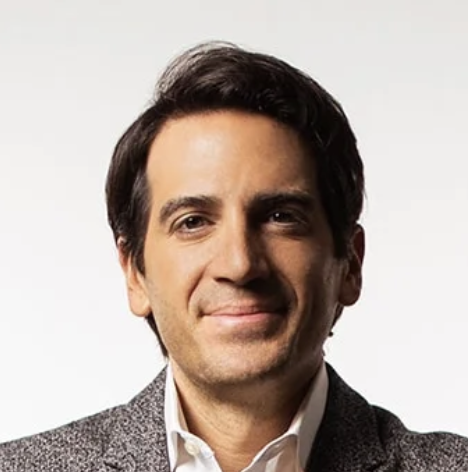Please, Don’t Let Just Anyone Inject Your Filler
There are needles—in your face. Remember that.


Walk down the street of any major city and you’ll find “medspas” and “clinics” on virtually every corner with price-fix point-and-plump menus that promise to enhance your pout, define your jawline, or get rid of your dark circles in 15 minutes flat. Filler is approachable. It’s essentially at your fingertips—you can make a same-day appointment, waltz in for a little Restylane, and pop out with a bag of frozen peas and new lips.
Such ease, while enticing, should give you a moment of pause. Do you really know who you’re trusting with a syringe and your face? “A lot of these places sell a cheek, a jawline, a lip—that’s not the right approach to filler,” says board-certified dermatologist and expert injector Dr. Shari Marchbein, who has had training on the intricacies of facial anatomy in medical school, dermatology residency, and for 16 years of active practice. “You rarely sell a particular part of the face. I’ll use one syringe of filler to treat the cheek, in front of the ear, and the jawline to create a harmonious lift and balance. Addressing just one area is when your face starts to look really overdone and sort of crazy.”

Dr. Dendy Engelman injecting lip filler.
For board-certified dermatologists and plastic surgeons, seeing the face holistically, and having a deep understanding of the risks that coincide with injecting so close to vasculature takes at least a decade of training. That’s not to say that nurse practitioners and physicians aren’t well trained. Some are. Some are amazing injectors that practice in facilities with a board-certified physician on site should a complication arise.
Others, however, can get an I-can-inject-filler-now certificate from a weekend class and take a needle to your face at a facility with a “medical advisor” who’s sitting on the other side of the country. “While many medspas employ well-qualified and experienced healthcare professionals, there is a potential variation in the level of training and expertise among practitioners,” notes board-certified plastic surgeon Dr. Ira Savetsky.
The reality is that while filler can be transformative, it comes along with substantial risks—more so than Botox. Think: blindness, death of skin tissue, vascular dilemmas. “Facial fillers are absolutely amazing when used in a really expert way. They can give a beautiful, harmonious look to the face that can take five to 10 years off,” adds Marchbein. “But it’s a potentially dangerous medical procedure that is not something that should be taken in a cavalier fashion—it’s certainly not as casual as a haircut or getting a manicure.”
So please, do your homework, know your injector, and be prepared for what’s to come by reading up on the below.
What to Know Before Getting Filler
Well, What Is Filler for Starters?
“Fillers refer to a group of injectable substances that are used to enhance or restore volume to different areas of the face or other parts of the body,” notes Savetsky. For the sake of keeping things digestible, there are two main categories: Hyaluronic acid fillers (think: Juvederm, Restylane), which are great for fine lines, wrinkles, and folds, and biostimulatory fillers (think: Sculptra, Radiesse), which actually help your body build collagen. The former typically lasts six months to a year and is thinner and softer in nature, whereas the latter is marketed as lasting up to two years and as ideal for building volume or enhancing contours, says Savetsky.
Stay In The Know
Get exclusive access to fashion and beauty trends, hot-off-the-press celebrity news, and more.
Still, it’s nearly impossible to outline exactly which type of filler is right for you. It’s a very personalized decision that will need to take into account your injectors preference and your goals.
Who Are You Letting Stick a Needle in Your Face?
Perhaps the most important factor to consider before booking your filler appointment is to do your research on your provider. “The provider needs to have in-depth knowledge of the underlying anatomy to avoid complications and optimize results,” says Savetsky. “It's crucial that a provider is able to immediately recognize an adverse reaction, such as a vascular issue, have the available medical resources, and possess the knowledge and training to deal with these issues.”
The absolute safest bet is go ahead with a board-certified dermatologist or plastic surgeon, but at a minimum you want to make sure that your injector has extensive training in facial anatomy and that there is a board-certified physician on site.

Woman getting filler injected to her temple.
Training is tantamount, but technique is a close second. Make sure to look at before-and-after photos from your injectors clientele to ensure you’re aligned with their style of injecting. “One of the reasons that people are so afraid of filler is that sometime’s people are overfilled and have no shadows or hollows on their face,” says Dr. Marchbein. “They don't have a tear trough, they don't have any smile lines, they don't have a marionette line—it looks very odd.” It’s certainly a matter of preference, but a heavily-filled appearance is undoubtedly what led to the filler fatigue and spike in filler reversals (thank you, hyaluronidase) that we are seeing today.
A more conservative approach that takes into account an individual’s entire face however is a style of injection that will transcend the landscape of “trendy” injections. “When filler first came out, there was an idea that you would fill a line or crease,” says Marchbein. “That really isn't what we do anymore. We want to globally harmonize someone's face to create a refreshed overall look. You do not want people knowing that you've had filler done. It's not about erasing every line or every hollow or every shadow.”
It’s Going to Cost You
“The cost of filler treatments can vary widely based on factors such as the type of filler used, the provider's expertise, geographic location, and the number of treatment sessions required,” says Savetsky. “On average, however, the cost of filler injections typically ranges from several hundred dollars to a few thousand dollars per treatment session.”
There Might Be Bruising—But It Shouldn’t Hurt Too Much
Your personal pain tolerance definitely plays into how uncomfortable you find the injection experience, but oftentimes your injector will use some type of numbing agent or lidocaine to make the process more comfortable. “The location of the injection, needle size, and the provider's skill also play roles,” says Savetsky.
That said, bruising and swelling are fairly common side effects and shouldn’t be a cause for concern; it will subside in no more than two weeks. “Bruising is the most common side effect that you're gonna get because there are thousands of blood vessels in the face and the needle can touch one of them,” says Marchbein. “Soreness is also very common—especially if you’re injecting by the temples or lips.” If swelling is severe, your doctor might prescribe a steroid such as prednisone to help calm the area down. As a rule of thumb, stop blood thinning medications around seven days prior to your filler appointment, unless otherwise advised by your physician.

Woman getting filler injected into her glabella lines.
Certain Areas Are Riskier Than Others
With any kind of injection—particularly one that’s going into your face—you’re going to have to consider side effects. “Filler injections carry minor risks such as bruising, swelling, and temporary irregularities, while major risks include rare instances of infection, allergic reactions, vascular complications, filler migration, and nodules,” says Savetsky.
Depending on what area you're having injected, the risks carry a bit more weight. For example, under eye filler requires an extensive understanding of anatomy in order to avoid blindness. “You have to be injected in the correct space, which is on the orbital rim,” explains Marchbein. Liquid nose jobs (read all about it!) pose a high risk for skin death, while injections along the temples are also considered high risk. Of course, going to a skilled professional ensures a safe process—and a minimum, a quick response at any sign of trouble.
It Can Be Dissolved
If you’re unhappy with your filler, all hope is not lost. Options exist. For starters, if you had hyaluronic acid filler injections, you might want to consider getting your filler dissolved. Called hyaluronidase, the treatment will essentially instantly reverse the effects of your filler. If you opted for a biostimulatory filler however, like Radiesse or Sculptra, hyaluronidase isn’t an option. Just remember, filler isn’t permanent and, while it may take some time, the added volume will eventually go away.
Meet the Experts

Dr. Shari Marchbein is a board-certified dermatologist and a fellow of the American Academy of Dermatology. Dr. Marchbein’s academic and clinical interests include the treatment of acne, in particular adult female acne, acne scarring, and rosacea. She also specializes in various aesthetic procedures and laser surgery. Dr. Marchbein has been sought out as a leader in her field for the treatment of acne and rosacea and has published multiple articles on acne pathogenesis and treatment.
She has presented at renowned national conferences on the topics of acne and rosacea, including the annual American Academy of Dermatology and Advances in Dermatology meetings. As a skincare expert, she has been featured in key media outlets including Vogue, Cosmopolitan, Allure, W Magazine and Byrdie.
She is a native New Yorker who grew up on Long Island’s North Shore. Dr. Marchbein earned her Bachelor of Science degree from the State University of New York at Binghamton where she graduated Summa Cum Laude and became a member of the Golden Key National Honor Society and Phi Beta Kappa National Honor Society.
Dr. Marchbein earned her medical degree at the State University of New York at Syracuse in 2004. During her time at Syracuse, she was inducted into the prestigious AOA National Medical Honor Society. Dr. Marchbein then completed her internship in Internal Medicine and residency in Dermatology at Pennsylvania State Milton S. Hershey Medical Center, where she served as chief resident.
After completing her residency in 2008, Dr. Marchbein moved back to New York City, where she had additional intensive training on the study and practice of cosmetic and laser surgery. Dr. Marchbein has enjoyed teaching dermatology residents for the past nine years as an Assistant Professor of Clinical Dermatology at NYU School of Medicine and earned a part-time Attending of the Year Award for teaching in 2009.

Dr. Ira L. Savetsky is a board-certified plastic surgeon who specializes in aesthetic surgery of the face, nose, breasts, and body. His background includes an unrivaled level of education and training in aesthetic procedures, as well as reconstructive, microvascular, and craniofacial surgery. Dr. Savetsky has trained with pioneers and leaders in plastic surgery at some of the most prestigious medical institutions in the world. In addition, he completed a highly competitive plastic and reconstructive surgery residency at the NYU Hansjörg Wyss Department of Plastic Surgery — ranked as the number one training program in the country. Dr. Savetsky is also one of few plastic surgeons in the country to undergo additional fellowship training in advanced aesthetic surgery at the Dallas Plastic Surgery Institute, particularly in facelift surgery and rhinoplasty. This institution is widely regarded as the top aesthetic surgery fellowship internationally.

Samantha Holender is the Senior Beauty Editor at Marie Claire, where she reports on the best new launches, dives into the science behind skincare, and shares the breakdown on the latest and greatest trends in the beauty space. She's studied up on every ingredient you'll find on INCI list and is constantly in search of the world's glowiest makeup products. She's constantly tracking the biggest nail and hair trends to pop up in the beauty space, going backstage during fashion weeks, tracking celebrity looks, and constantly talking to celebrity hair stylists, nail artists, and makeup artists. Prior to joining the team, she worked as Us Weekly’s Beauty and Style Editor, where she stayed on the pulse of pop culture and broke down celebrity beauty routines, hair transformations, and red carpet looks. Her words have also appeared on Popsugar, Makeup.com, Skincare.com, Delish.com, and Philadelphia Wedding. Samantha also serves as a board member for the American Society of Magazine Editors (ASME). She first joined the organization in 2018, when she worked as an editorial intern at Food Network Magazine and Pioneer Woman Magazine. Samantha has a degree in Journalism and Mass Communications from The George Washington University’s School of Media and Public Affairs. While at GWU, she was a founding member of the school’s HerCampus chapter and served as its President for four years. When she’s not deep in the beauty closet or swatching eyeshadows, you can find her obsessing over Real Housewives and all things Bravo. Keep up with her on Instagram @samholender.
-
 Tyla's Coachella Outfit Pairs Dolce & Gabbana With Pandora
Tyla's Coachella Outfit Pairs Dolce & Gabbana With PandoraThe singer wore a gold version of the crystal bra made famous by Aaliyah.
By Amy Mackelden Published
-
 How Kate Middleton Is Influencing George's Fashion Choices
How Kate Middleton Is Influencing George's Fashion ChoicesThe future king's smart blazer is straight out of Princess Kate's style playbook.
By Amy Mackelden Published
-
 King Charles "Couldn't" Meet Prince Harry During U.K. Visit
King Charles "Couldn't" Meet Prince Harry During U.K. Visit"It could actually bring down a court case."
By Amy Mackelden Published